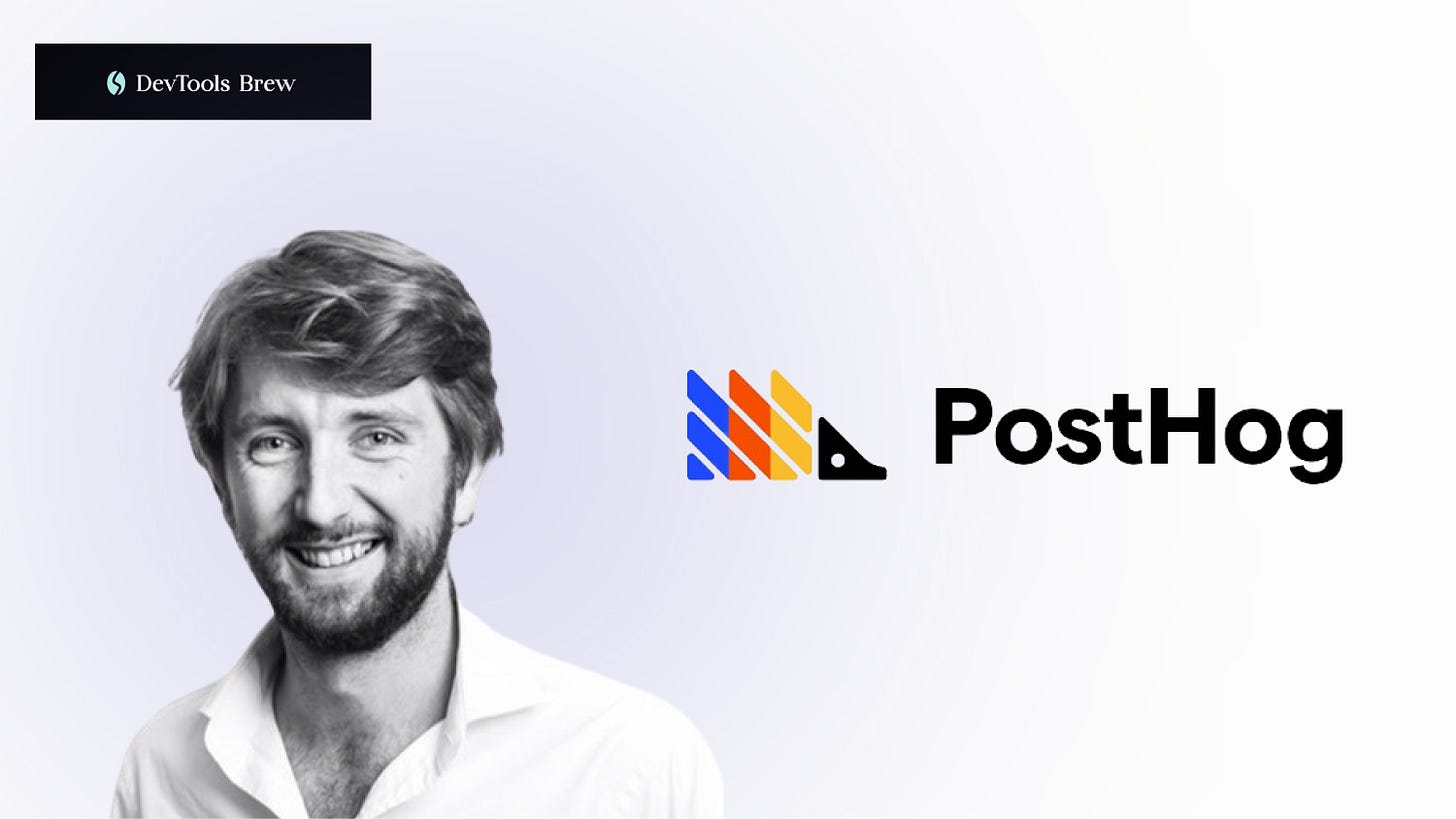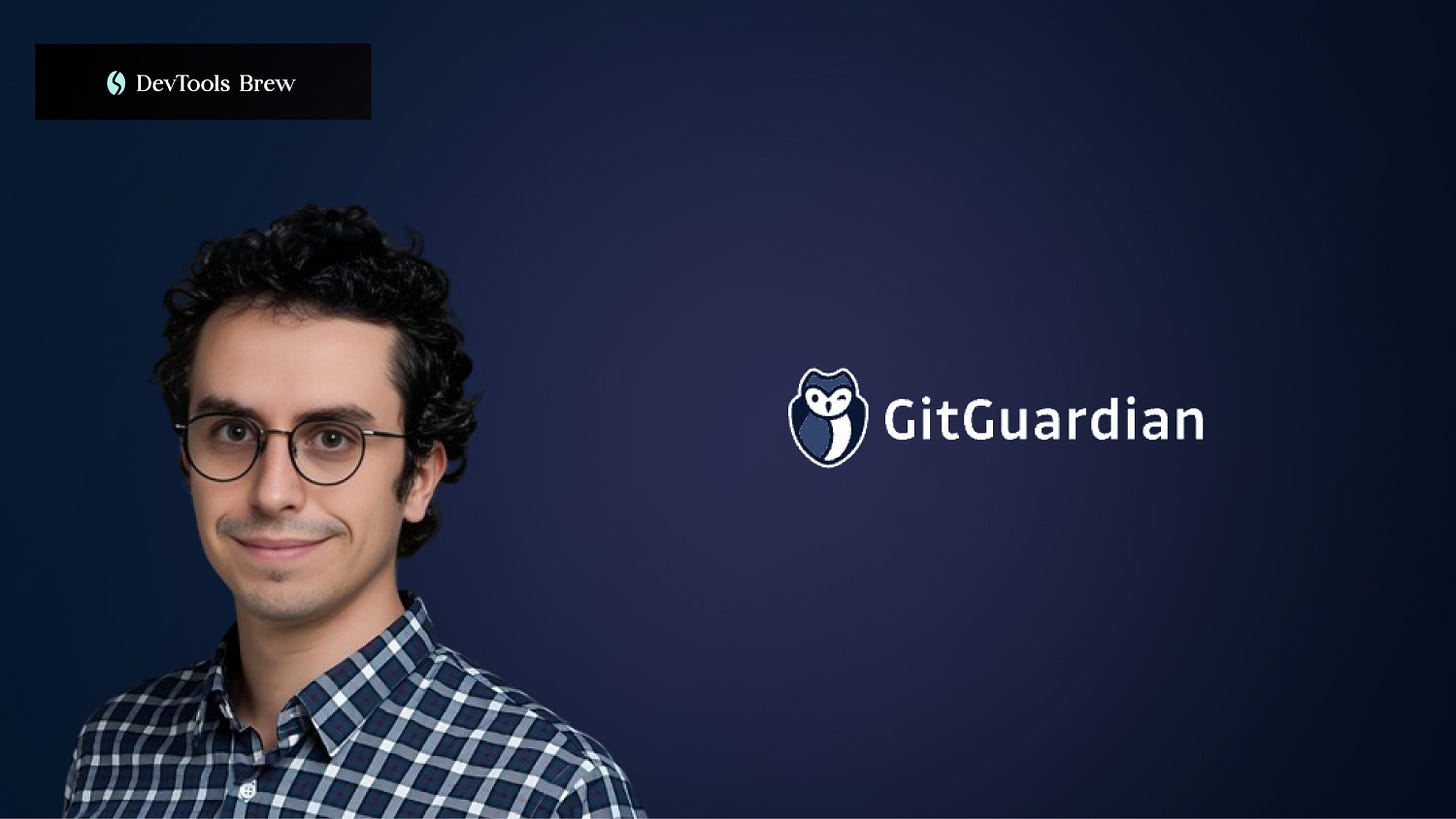DevTools Brew #64: PostHog: Reaching their first 1,000 users | How GitGuardian leverages data and GitHub to fuel their growth...
Hey folks, welcome to DevTools Brew Newsletter #64!
If you're new here, my name is Morgan Perry, co-founder of Qovery.
Every Saturday, I share the stories, strategies, and insights behind the most successful devtool companies. Subscribe to receive weekly stories :)
Also, follow me on Linkedin if you don’t already!
In this Issue #64:
📈 PostHog: Reaching their first 1,000 users
📕 How GitGuardian leverages data and GitHub to fuel their growth
⭐ Star History Weekly Pick
Let's dive in!
📈 PostHog: Reaching their first 1,000 users
For many founders and operators in the devtools space (and subscribers of this newsletter), acquiring those first users is a crucial and rewarding milestone. James Hawkins, CEO of PostHog, recently shared the journey of how the company reached its first 1,000 users, providing great insights into the strategies and decisions that propelled their growth. Let’s dive into this milestone PostHog achieved, from initial struggles to this significant milestone.👇
Key insights and lessons
Initial struggles & Pivots
Initial struggles: James and his co-founder Tim pivoted five times before settling on PostHog. They encountered significant challenges in getting even 10 companies to use their initial products.
Learning from failures: Each pivot was an opportunity to learn what didn't work and refine their approach. This resilience and willingness to adapt were crucial in finding a product-market fit.
Focused plan: The decisive one-month plan aimed to quickly validate if people were dissatisfied enough with existing product analytics tools to try PostHog.
Strategic product decisions
Building for developers: PostHog targeted developers, a segment underserved by existing product analytics tools focused on product managers and executives. This focus allowed them to create a product that resonated with their initial user base.
Self-hosting priority: They prioritized self-hosting, believing developers would value control over their data. Although a cloud product might have accelerated growth, this focus provided clarity and direction.
Open-Source & Transparency: By being open source and adopting a permissive MIT license, PostHog appealed to enterprises with strict licensing policies and developers who appreciated transparency.
Ease of deployment: The inclusion of event autocapture in their SDKs eliminated the need for manual event instrumentation, reducing friction for new users.
Go-to-Market strategy
Not monetizing at launch: PostHog decided not to monetize initially, allowing them to move quickly and focus on user acquisition without the pressure of generating revenue. This approach, supported by a VC-funded model, was crucial in their early stages.
Leveraging personal networks: The founders initially reached out to friends and acquaintances, making it easier to find willing early adopters and build a product that met real user needs.
Expanding outreach: Beyond personal networks, they used cold outreach through professional groups and LinkedIn to attract additional users. This step was critical in validating their product with users they didn’t know personally.
Launch strategy
Public launch on Hacker News: The team ensured their product was self-serve and useful to strangers before launching publicly. Their Hacker News launch resulted in 300 deployments within days, significantly boosting visibility and credibility.
Promoting on Social Media: Spending around $2,000 on Twitter promotions helped PostHog’s repo trend on GitHub, sustaining momentum after the initial launch surge.
Learning from early users
Continuous feedback: PostHog actively sought feedback from early users to understand what they liked and disliked, and what additional features they wanted.
Iterative improvements: Based on user feedback, they focused on shipping features like feature flags that were highly requested by engineers, ensuring the product continued to meet user needs.
Introducing pricing
Gauging interest: They tested pricing by gauging interest among existing users and embedding a pricing page with direct calendar access for sales calls.
Iterative pricing model: Early pricing discussions were ad-hoc, gradually evolving into a consistent internal pricing document that aligned with user expectations.
Launching PostHog Cloud: Introducing a cloud product with a limited free tier and a 30-day free trial helped streamline the user onboarding process and increased confidence in the product.
8 Lessons learned from reaching 1,000 users
Deadlines are motivating
Having a one-month plan with a hard deadline helped the team stay focused and make decisive choices.Plan for user acquisition early
Knowing their target users and how to reach them gave PostHog a clear advantage.Prioritize learning over revenue
Early hands-on onboarding provided invaluable insights, which were more important than immediate revenue.Focus on repeat users: A small number of loyal, repeat users can provide more valuable validation than a large number of one-time users.
Effective communication: Being concise and direct in outreach efforts improved their chances of getting valuable feedback and securing meetings.
Responsive user support: Extremely quick response times (within 30 seconds) helped build trust and demonstrate their commitment to users.
New users vs. Existing users: New users were more likely to pay for the product than existing free users, an important consideration for monetization strategies.
Transparent pricing: Introducing clear pricing helped increase usage and growth, as users took the product more seriously when they saw it was being professionally monetized.
James Hawkins’ journey with PostHog from zero to 1,000 users highlights the importance of focused planning, user-centric development, and strategic pivots. PostHog set a strong foundation for scaling.
—> To explore more, read the full blog post here - published initially on the PostHog blog.
📕 How GitGuardian leverages data and GitHub to fuel their growth
Continuing our series on acquiring new users, let’s zoom in on the growth story of GitGuardian. This fast-growing French cybersecurity startup has leveraged unique tactics and innovative approaches to fuel its growth. Orian Roturier, Head of Growth and Demand Generation at GitGuardian shared great insight on their growth playbook and the key lessons they've learned along the way.👇
Key Takeaways:
1. Innovative growth hack on GitHub
Growth hack: GitGuardian scans public GitHub repositories for leaked secrets and notifies developers with a courtesy email. This tactic drives 90% of their developer sign-ups, boosting their product-led growth (PLG) and brand awareness.
Cost-effective: This approach costs only $90 per year for email notifications using Mailgun.
High engagement: About 10% of developers receiving notifications resolve their issues and sign up for GitGuardian.
2. Leveraging newsjacking for brand authority
Timely response to breaches: GitGuardian sets up a process to quickly analyze and report on high-profile security breaches. This establishes them as an authoritative voice on emerging security threats.
In-depth analysis: They publish detailed breach reports, providing valuable insights rather than sensationalizing the issues. This approach generates significant website traffic and brand lift.
3. Connecting PLG and Sales-Led motions
From developers to security engineers: GitGuardian starts with developer acquisition through their email hack and then engages security engineers at these accounts using a mix of Business Development Representatives (BDR) outreach and Industry-Based Marketing (IBM).
Unified data platform: They use Snowflake as a central data source to support marketing, sales, and customer success management (CSM), ensuring targeted and effective engagement.
Common metric: The entire marketing team drives toward the same metric: new pipeline value created. This ensures strong alignment and collaborative efforts.
4. Data-driven growth
Data team's role: A central data team supports various functions with a unified customer data platform. They analyze product usage data to identify promising sales targets and drive growth strategies.
Industry trend reports: Researchers leverage data to create industry trend reports, enhancing their thought leadership and content marketing efforts.
5. Product & Target audience
SaaS platform for secrets management: GitGuardian offers a platform that monitors public and private code repositories for exposed API keys, tokens, certificates, and other secrets.
Target audience: They primarily serve mid-market to large enterprises with engineering teams above 200 developers. Their main users are application security engineers, but they also target CISOs and other security stakeholders.
6. Customer acquisition strategies
PLG approach: Besides their GitHub hack, GitGuardian offers free tools like "Has my secret leaked?" to build brand awareness and attract developers.
Sales-Led approach: For larger enterprises, they use a traditional sales-led approach, leveraging events, third-party data, and targeted outreach.
Transparent pricing: GitGuardian's transparent pricing builds trust with technical users. They publish pricing details openly, which helps in building credibility and reducing friction in the sales process.
7. Newsjacking & Content strategy
Rapid breach analysis: During major security incidents, GitGuardian quickly publishes detailed breach analyses. This establishes their brand as an authority and drives significant traffic and backlinks.
State of Secrets Sprawl report: This annual report highlights the growing issue of secrets sprawl and offers insights on detection and remediation. It’s a collaborative effort involving content, R&D, and data science teams.
8. Event strategy
Smart and cost-effective: GitGuardian focuses on industry events that allow them to connect with their core personas effectively. They design interactive booth experiences and rigorously track post-event leads for ROI analysis.
9. Team Structure and collaboration
Marketing team structure: The marketing team consists of content marketing, product marketing, shared services, and growth marketing teams. Each team plays a crucial role in driving overall growth.
Unified goals: All marketing team members align towards the same goal of creating new pipeline value, fostering tight collaboration and shared objectives.
Conclusion
GitGuardian's journey to acquiring new users highlights the importance of innovative growth hacks, data-driven strategies, and seamless integration of PLG and sales-led motions.
—> To explore more, read the full blog post here - published initially on the DecibelVC blog.
⭐ Star History Weekly Pick
The Star History Weekly Pick is:
Laudspeaker: “Open Source alternative to Braze, One Signal, Customer Io, Appcues, Pendo.”
⭐️ 2k stars reached
It’s already over! If you have any comments or feedback, you can reach out to me on LinkedIn or Twitter.
Thanks for reading,
Morgan




